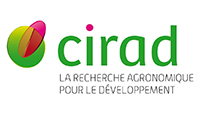Human-faunal interactions as drivers of phenotypic change in Southeast Asia
Résumé
Biodiversity is not just the number of species but one of its major
aspects is the observable (or phenotypic) diversity of forms, present within
and between species. This relates to biological evolution, natural selection,
ecosystem functions and services, and conservation.
However important it may be, phenotypic diversity is still
underlooked in conservation policies, or in models of biodiversity response
to anthropogenic changes. Simply put, we still have no comprehensive
idea of how phenotypic diversity interacts with human impacts. In the
biodiversity hotspot of Southeast Asia, where drastic changes are ongoing,
as in other tropical and economically growing areas, this gap is particularly
visible and damageable. Indeed, booming cities and crops can be expected
to cause major disruptions in diversity, both taxonomic (number of species)
and phenotypic. The latter relates directly to the collapse of ecosystemic
functions and services in anthropized areas, and should therefore be a
priority at all levels: political, educational and scientific. On the other hand,
it also relates to the rapid capacity of some organisms to adapt to human
driven change, and these adaptions themselves can become a problem
for the well-being of human societies, as well adapted organisms in that
commensal context might generate new risks (e.g., pathogens) to human
health and economy.
Here, we synthetize the standing knowledge of the influence of
anthropogenic changes on phenotypic (morphological) diversity in
vertebrates. With that in mind, we present a case study of five rodent species
of different ecologies in Southeast Asia, with populations living in areas more or less affected by anthropization. We show some examples in which
the morphology of these animals is correlated with human land use. We
also show that, within populations, species adapted to living with humans
have less morphological diversity than other species, probably because they
tend to disperse less.
These examples show that anthropo-ecosystems can modify the
morphological traits and ecology of wildlife, and that middle or long-term
monitoring of population traits is necessary to identify evolutionary
responses to anthropic changes. The examples show that one can also take
advantage of spatial herterogeneity in terms of environmental degradation
to produce forecast models. We believe this should be generalized, as it
is a great opportunity not only to solve fundamental questions related
to evolution, but also to learn how the biosphere will change and adapte
with the rapid environmental modifications of the Anthropocene. This
is especially urgent in Southeast Asia due to its high biodiversity and fast
anthropic changes.
Domaines
Evolution [q-bio.PE]| Origine | Accord explicite pour ce dépôt |
|---|




